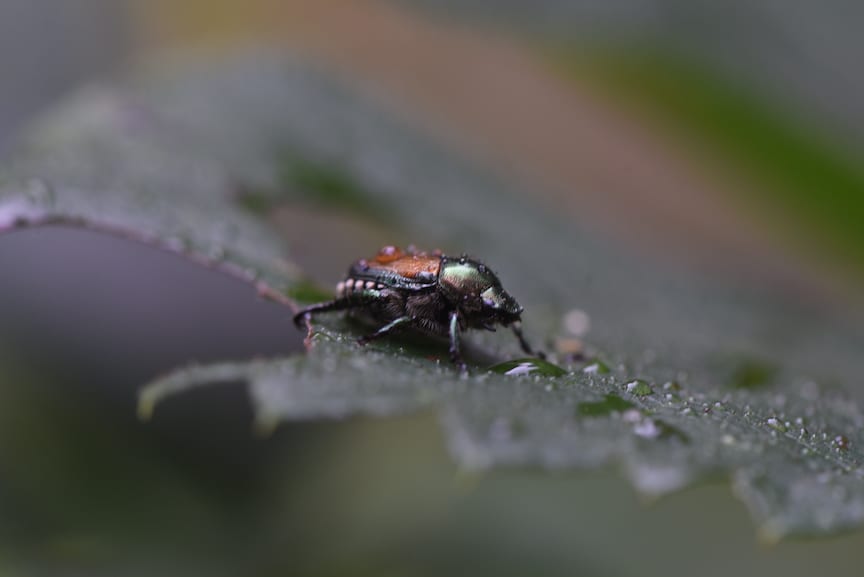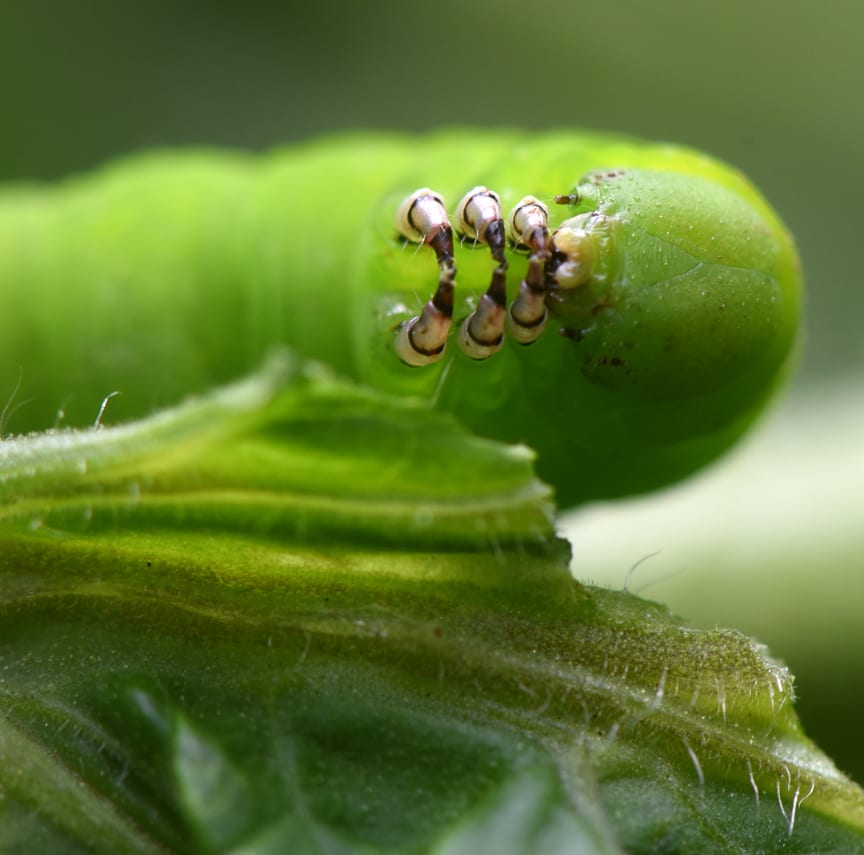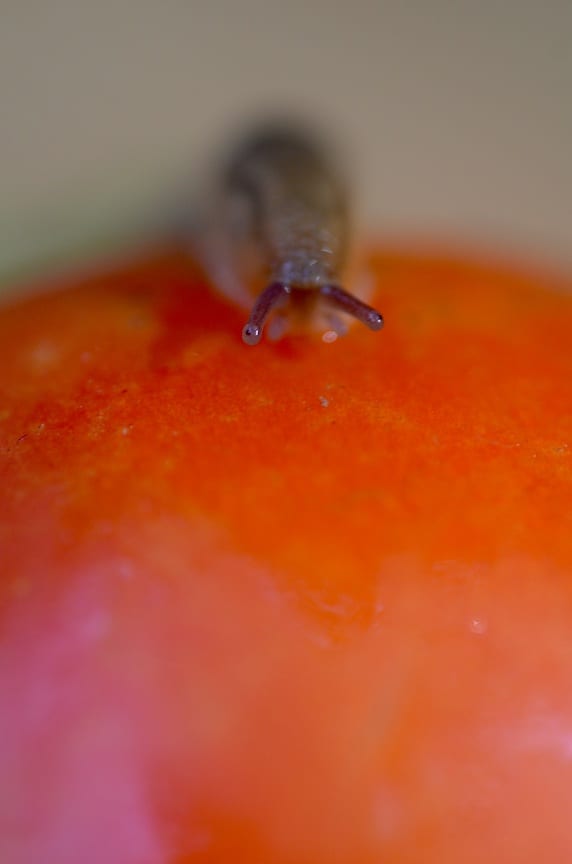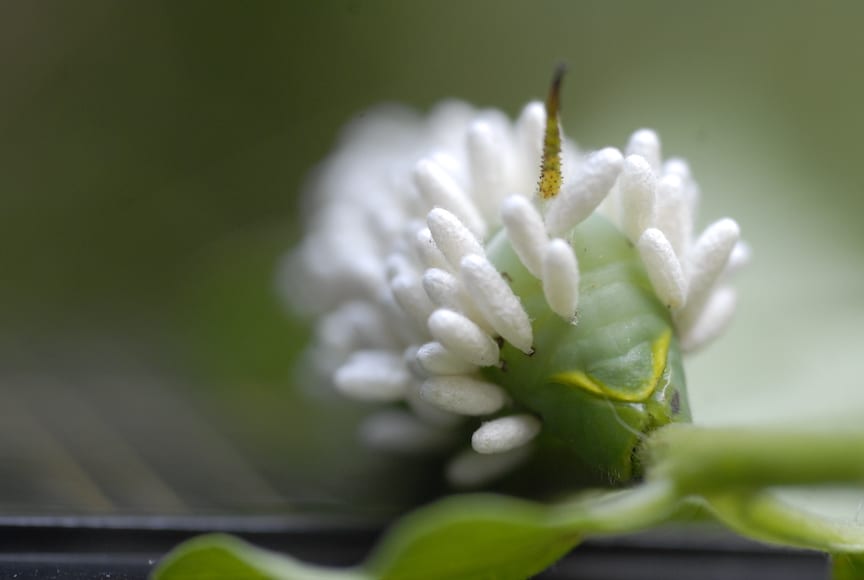
Gardening Green with Doug — Bad Bugs Begone: Garden Problems Solved
By Doug Oster
August 4, 2020
As late afternoon thunderstorms subsided, a walk in the garden revealed the inevitable — something was eating the foliage of a prized tomato plant. I knew right away I was searching for the deftly camouflaged tomato hornworm. It didn’t take long to find, as I studied the area of chewed leaves and following a trail of frass (excrement) to the reveal the pest, life in the garden can be pretty disgusting some days.
The hornworm is as thick as my thumb, as long as a finger and not only defoliates plants, but also will eat the fruit too. Handpicking, if you can stomach the job, is the easiest way to control them. When my kids were young, the worms would be sent to school in a mason jar filled with foliage and hole poked in the lid for air. Science teachers in particular appreciated the scary-looking, but relatively harmless creatures for show and tell.

Finding one of the worms with rice like cocoons on its body is actually a good thing. At this point the pest has stopped feeding, as parasitic wasps are using it as a host and will eat it from the inside. Did I mention life in the garden can be pretty disgusting some days? That worm is left alone in this case, perpetuating the wasp is just one way to deal with pests organically.
Letting nature create a balance by not using chemical pesticides, herbicides, or fertilizers will go a long way to solving garden problems. Mother Nature is always in control, and it’s going to be much easier to work with her and nearly impossible to deal with when working against her. Remember though, some years are easier than others, that’s just what gardening is all about. When one problem is solved, another unique issue might pop up.
The key to controlling pests organically is first identifying the problem, not panicking, and then finding a safe way to deal with what’s going on. Observation might seem like an obvious first step, but in the heat of battle it can be lost in the fray.
Take some time and look at the plant closely to see if the pest is still there, turn leaves over and search above and below the damage for the culprit. There are common problems which turn up seasonally and if you’re stumped ask someone at your local garden center or nursery.
Take in the damaged foliage in a sealed plastic bag for inspection. Also remember that most of the insects in the garden are either good or benign — we’re only trying to stop the bad bug without disrupting the cycle of life in the garden.
If handpicking turns your stomach, chewing insects like the hornworm, Japanese beetles, cabbage worms, cucumber beetles, and others can be stopped with Captain Jack’s Dead Bug Brew, which is just one product using Spinosad as the active ingredient. It’s not a poison, but when the pest ingests the brew, it disrupts the insect’s nervous system. It can’t hurt us, the good bugs, our soil life, or people living downstream.
Japanese beetles are another pest which handpicking is an effective tool to use. In the morning, when it’s cool and they are a little slower, knock them into a jar of soapy water.
Sucking insects like aphids, spider mites, and whiteflies are easily taken care of with insecticidal soap or horticultural oil. It needs to be sprayed on the pest itself and in some cases will take a few applications over as many weeks to knock the population down.
It’s slug damage, which can confound gardeners, as this pest feeds at night.

During the heat of the day these snails without shells hide under cool mulch waiting to feast on the garden when the sun goes down. They haven’t been a terrible problem this year in many gardens as it’s been a dry summer. Also look for a slimy silvery trail on the leaves to know slugs had a late-night snack in the garden. Sluggo uses iron to overdose the slug when it eats these organic pellets. Anything left over fades away into the soil where the plants will enjoy the iron.
In my garden these products are rarely, if ever, used as plants growing in good soil amended with organic matter like compost are healthy and able to fight off an infestation. It’s when plants are dealing with a lack of nutrients or drought when they are much more susceptible to attack.
Growing the right plant in the right place, with sun lovers and shade plants living in their respective environments also helps them thrive.


Another tactic used by organic gardeners is to attract beneficial insects by growing small flowering herbs like dill, thyme, and fennel. Sweet alyssum is an annual flower which also attracts ladybugs. Growing a variety of other flowers will also bring in the good bugs to do battle with the nasties.
Birds are also great predators, although they don’t discriminate between good and bad bugs. Feeding the birds year-round sets up a foraging route for them. They will use the garden to hunt for food, helping us garden. It’s wonderful to see wrens snatching cabbage worms off plants to feed their young.
Unless an insect is slowing production on a vegetable crop or making an ornamental look awful, there’s really nothing to worry about if an occasional pest is spotted. It’s only when they get the upper hand on a plant which signals the time to spring into action.
![]()

Leave A Comment